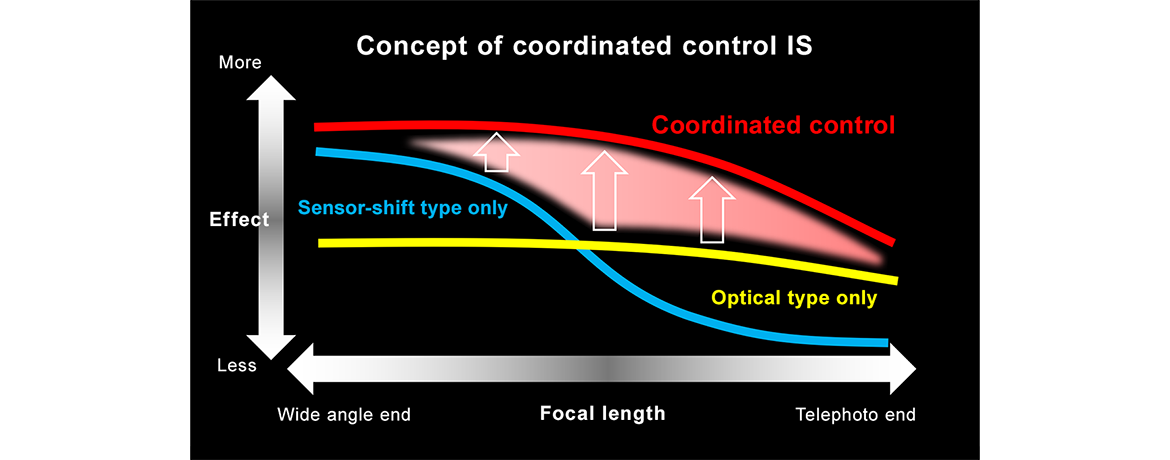Coordinated Control IS

Canon has been developing and improving in-lens image stabilization (IS) systems for decades. IS functions have been incorporated in many EF and RF lenses, opening up new possibilities in imaging expression for photographers and videographers. The EOS R5 was the first EOS camera to feature an in-body image stabilization mechanism. The coordinated control of the in-lens IS, and the camera’s in-body IS achieves a camera-shake blur correction equivalent of an increase of up to 8.0 stops, in shutter speed. At the time it was released, this was the most effective IS* of any commercial camera. The IS mechanism works as follows: a gyro sensor/accelerometer is installed in both the camera and lens. These sensors, along with the camera’s live-view image, are utilized to detect motion or blurring with high precision, across the entire camera and lens. The camera shake data is then processed at high speed by the image processor and the lens CPU, to reduce detection errors between the camera and the lens. This calculates the appropriate correction ratio, and the camera and lens each make separate optimized corrections to reduce camera-shake blur. The impact that this has on image stabilization not only works for still photos, but for movies as well. This once again demonstrates the technological prowess that Canon has brought to the world of imaging.
*Refers to interchangeable-lens digital cameras available as of July 8, 2020 (both EOS R5 and EOS R6 have coordinated In-Body Image Stabilizer Still Shooting performance effective up to an 8.0-stop increase in shutter speed). According to Canon research.

